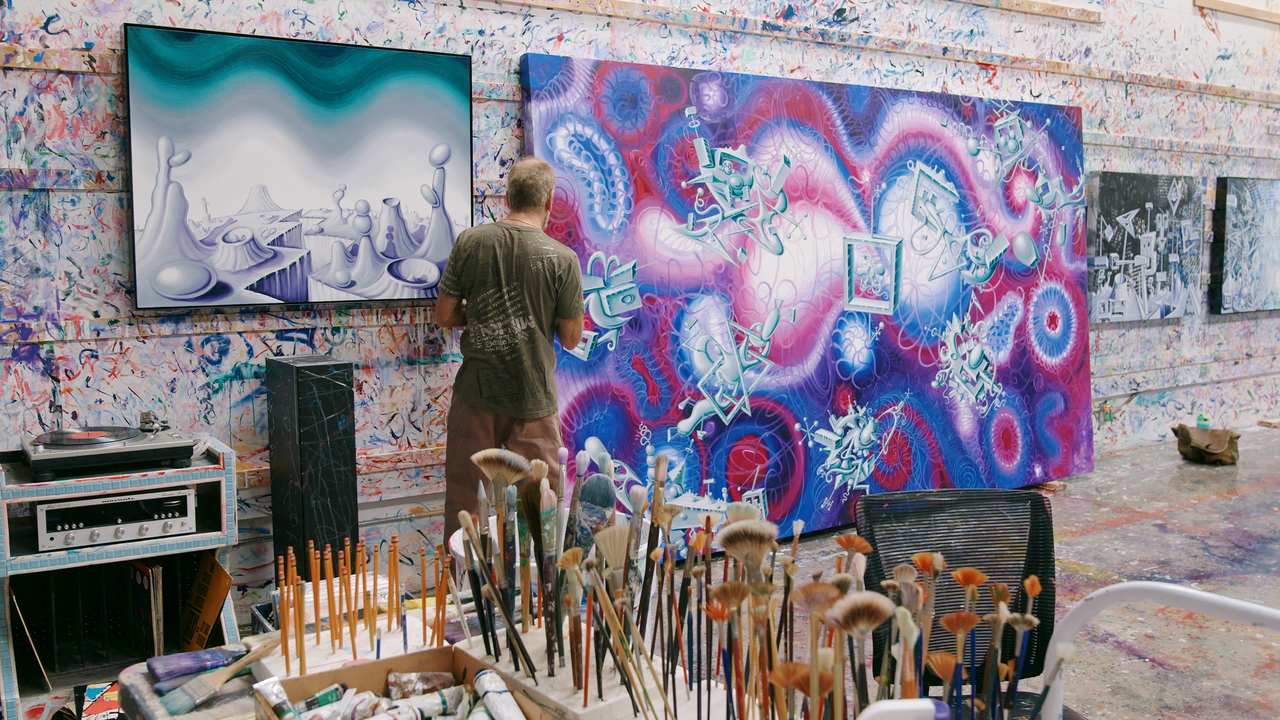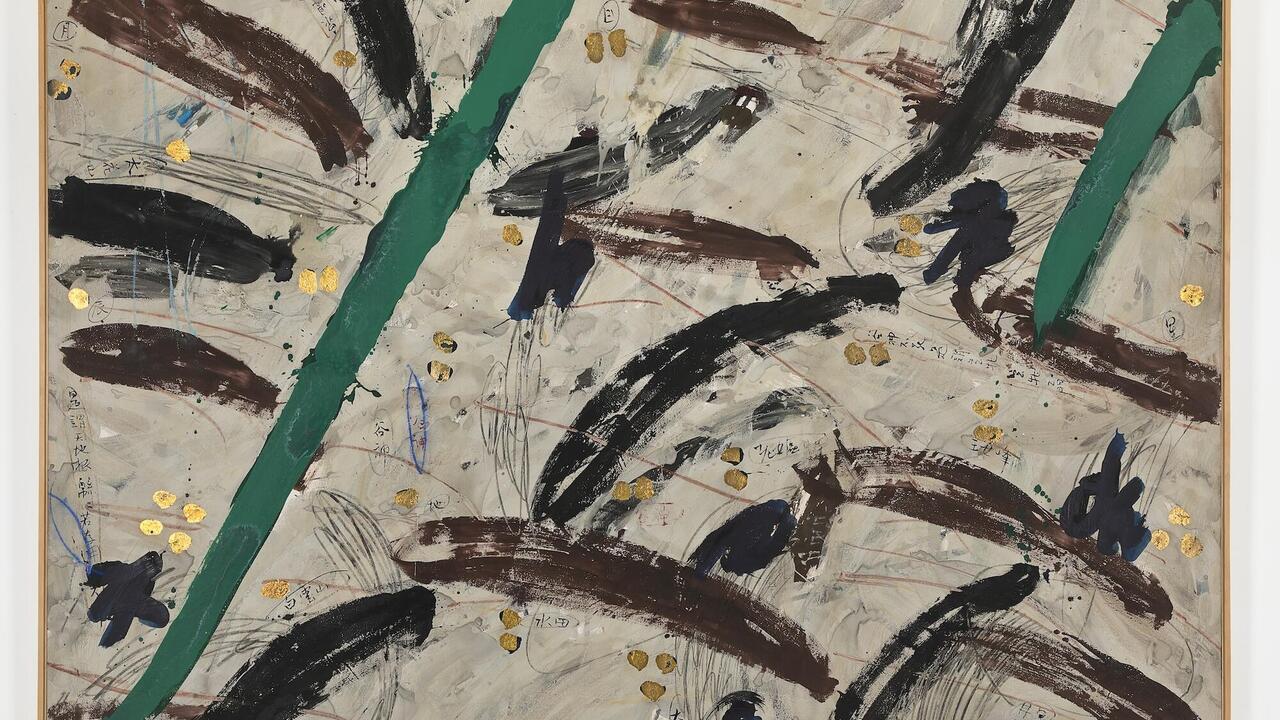Marketing the City
Muenster
Muenster
Arriving in Muenster in the evening, one finds the city empty and silent. Footsteps echo in the cobbled streets. Along the way, small sculptures catch the eye, presumably part of this summer’s Sculpture Projects Muenster. Suddenly a majestic expanse alternating between asphalt and sand opens up in the city centre. Now the click-clack of footfalls resounds more precisely; the senses are aroused; even the tired punch-line that this striking sculpture in the pedestrian precinct is not a sculpture but rather a real building site does not detract from its sublime impact: emptiness, absence of meaning and dysfunctionality are surely the best antidotes to urban scenes saturated with content and the banal symbols of city marketing.
In many ways the most pointed work in Sculpture Projects Muenster is Andreas Siekmann’s Trickle Down. Der öffentliche Raum im Zeitalter seiner Privatisierung (Trickle Down. Public Space in the Era of its Privatization, 2007), shredding the most conspicuous symptoms of city branding and reassembling the remains as a gigantic ball of brightly coloured stupidity, a rotund monster that looks like the implosion of idiocy itself. From various online sources Siekmann purchased the large, fibre-plastic signature mascots of over 600 towns and cities (bears in Berlin, cows in Chicago, or rats in Hamelin) and then destroyed them.
He placed the resulting sculpture in the Erbdrostehof, a baroque architectural tourist attraction in the centre of Muenster, and stencilled the outlines of all the mascots onto a skip beside it. On the surrounding walls and inside the building, in a visual language indebted to the socialist graphic designer Otto Neurath, he tells the story of his sculpture but also that of the selling-off of municipal resources (water, transport systems etc.) through cross-border leases sealed by non-public contracts. Rather than merely being negated through silence, then, city branding and the accompanying sale of public resources must be combated. Muenster, we are told, also considered patenting its own symbol before recoiling from the idea: the populist object would disrupt the more refined form of city marketing represented by Sculpture Projects itself.
Berlin’s awful bears were called ‘Buddy Bears’. In her project Roman de Münster (A Muenster Novel, 2007), Dominique Gonzalez-Foerster could be accused of making ‘Buddy’ versions of past and present art works from Sculpture Projects – from Daniel Buren’s gateway (4 Tore, 4 Gates, 1987) to Jenny Holzer’s bench (Bänke, Benches, 1987) – all in miniature. Gonzalez-Foerster’s panorama gives the event an easily graspable surface and makes its products popular. But they are popular anyway. Taxi drivers here can quote Rosalind Krauss fluently and spend their free time discussing the aesthetics of participation. One could argue in her defence that Gonzalez-Foerster has illustrated this state of affairs: she has depicted the status of the project in Muenster – that is, every sculpture in Muenster is always also a Buddy Bear.
The suspicion that any conspicuous urban feature may be art has long since become a jeu de société: the city’s inhabitants arrange their balconies as Isa Genzken sculptures and when Gustav Metzger has black stones deposited at a different randomly generated set of co-ordinates every day, and Michael Asher parks a caravan in particular places for the past three Sculpture Projects, the people of Muenster are in on the act, adding their own stones and cars. Mark Wallinger has labelled this magical area of urban gallery space Zone (2007): designating a traffic island in the middle of town as its centre, he marked out a circle with a fishing line attached several metres above ground level to buildings, lampposts and pylons for power cables. Zone makes one think of precarious territories where different laws apply, such as the ‘Green Zone’ in Baghdad or Guillaume Apollinaire’s famous poem ‘Zone’ (1913). Here it is the dubious magic of life doubling as art in which everything shrinks, becomes manageable, allows itself to be distanced as a complex set of objects and ideas – while those same objects and people doubling as art continue to live their real lives.
In front of one of Muenster’s many churches stand 30 or so small prams filled with dolls and other creatures, surrounded by plastic toys and cheap objects. One of the interpretations Isa Genzken suggests for her work Untitled (2007) is a reference to the culture-spanning theme of child abuse. Yes, just a few hundred kilometres to the east of here, in Kassel, the search is on for ‘bare life’, while in works such as Genzken’s in Muenster the realization has clearly dawned that children are the true homines sacri: idolized yet without rights, emotional–political role models and abuse victims. While Gonzalez-Foerster’s miniaturized ‘sculpture project’ turns urban space into a children’s room, Genzken bundles a whole range of contemporary projections involving children.
Mike Kelley, who has often commented on the reactionary aspect to identification with victimhood, invites visitors to his Petting Zoo (2007). The plot, surrounded on all sides by office buildings, looks like a medium-sized circus tent. On the way in, goats and sheep hold their heads out towards the never-ending supply of stroking hands. In their midst stands a statue made of salt, which is meant to represent Lot’s wife from the biblical story of Sodom and Gomorrah. The idea is that the animals will lick at it until it disappears. Meanwhile, three screens show footage of rock formations in various parts of the world, mostly in deserts, that are referred to by the locals as Lot’s Wife.
But this apparently friendly work actually adopts quite an unfriendly stance towards the standard aesthetics of participation in art in public spaces – a long-overdue position. Here, in the midst of the source of children’s delight, the idea that it is always somehow good when people join in, when voices become audible, when something is created, is confronted with a critically sarcastic aesthetic of obscuration: the catalogue and other rumours talk of another side to the piece that is not accessible or whose development is hidden. The innuendo in the work – a link between sodomy (a term with many meanings: in some languages simply anal sex, in others sex with animals), children, animals and the petting zoo – is said to be complemented by sociological–sexual research in Muenster or hermetically stimulated by the cryptic adjacent porter’s cabin, which stands completely empty except for straw and a disco ball.
A counter-model to strategies of obscuring is the idea of making public even the esoteric and spiritual, as demonstrated by Maria Pask’s tent encampment Beautiful City (2007). At first glance it seems as though the participatory, pseudo-democratic notion that every voice is valuable is subversively surpassed by voices of crazy preachers and religious outsiders. In a bookshop in the main tent communist, post-Structuralist and otherwise attributable texts are also presented as spiritual belief systems. Although there is an occasional sense of irony, this work is essentially based on the idea that the task of art with respect to the public is to strengthen the unheard, to bring the marginal into the centre – an idea that, in a broader sense, also forms the basis of Jeremy Deller’s Speak to the Earth and It Will Tell You (2007–ongoing), a not unsympathetic co-operation with a Muenster allotment society. But these have long since become the central and dominant strategies of populism and tabloid television. Today the task is not just to render audible, strengthen and make public but to qualify, evaluate and present arguments.
A work such as Nairy Baghramian’s Entr’acte (2007) – its sparse elegance immediately visible even at a distance from the car park in which it’s installed – illustrates the merits of a high degree of identifiable otherness in artistic interventions in the urban space, in contrast to mimicking existing populist forms of fun. The area marked by Baghramian’s dividing screen oscillates between the beautiful arbitrariness of demarcations of space, and their forcible imposition of difference – a demonstration of art’s complicity in certain systems of power and control.
With her ironic Land art reprise Aaspa – Wellness am See (Aaspa – Rest & Relaxation at the Lake, 2007) – a well-organized building site on the banks of Lake Aa, Muenster’s most popular jogging area – where sand is meaninglessly shifted back and forth according to plans that change on a daily basis, Annette Wehrmann gives a fittingly laconic answer to the imposition of a ‘state of exception’ in which anything could turn out to be art, around which Wallinger has drawn his fragile fishing line. Friction could arise between this suspicion that everything is art, and the obstruction of the jogger’s voluntary maintenance of their own labour power. The fact that joggers have to make a detour, that a particular kind of semi-consciously perceived cinematic landscape is altered and that speculation with lakeside property is caricatured as a Sisyphean tableaux are all interruptions of the city’s routine as severe as they are unobtrusive.
The nocturnal part of this routine, too, is less eerily empty than it seemed to the visitor in the opening scene of this text – as we gather from Clemens von Wedemeyer’s reactivation of a disused cinema near the main railway station, staffed by a local homeless people’s organization and showing a non-stop 40-minute loop of a film shot directly outside the venue’s front door. At first glance Von Gegenüber (From the Opposite Side, 2007) is a documentary about 24 hours in the life of the railway station, but one soon notices well-placed staged episodes. Urban space – the unifying abstract theme of Sculpture Projects Muenster – is condensed here in a concrete image of reality whose adequacy can be immediately inspected by the visitor on leaving the cinema. The use of the first-person camera introduces the sculptural moment into the film, using dizzying spatiality as opposed to the linear grammar of montage. By positing a semi-fictional but concrete urban space and using the subjective, hand-held camera, von Wedemeyer does justice to the much-discussed advancement of film to the status of a sculptural medium in this year’s Sculpture Projects. Leaving the cinema, one passes through the station, which von Wedemeyer filled with so many characters. It of course turns out to be far emptier than it was in the film.
Translated by Nicholas Grindell
















